Family: Asparagaceae Juss.

Distribution: Endemic to Sonora and Chihuahua deserts in Arizona, New Mexico and western Texas and neighbouring Mexican states of Sonora and Chihuahua. This genus contains about 17 species from arid and mountainous regions of southwestern United States and Mexico.
Ecology: Desert plant, on dry, sunny, rocky slopes up to elevation of 2000 m. Blooms in late spring and early summer. Moderate to slow growing.
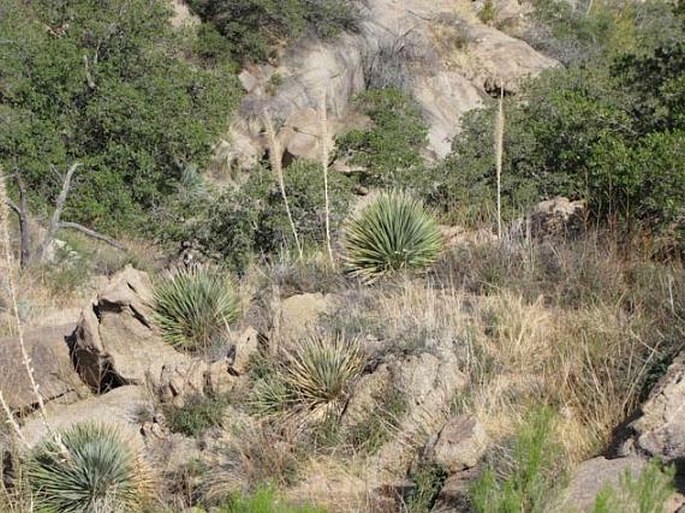
Description: Perennial, dioecious plant, succulent, often acaulescent, or with trunks to 1.5 m long, usually reclining, and with large rosette of leaves. Leaves are leathery, tough, linear, 35–100 cm long and 2.5 cm wide, with curved teeth along the margins, whitish or bluish green, waxy-glaucous. The leaf bases are shaped like spoons, hence one of the common names. Inflorescence grows above the foliage to height of up to 5 m, on a stem about 3 cm thick. The raceme contains thousands of straw coloured small flowers with 6 tepals, 2.4 × 1–1.5 mm. As the plant is dioecious, the fine colouring of flowers is the key to sexes. White flowers indicate male plants and purple pink females. Fruit is a capsule, dry, oval, 5–8 mm long with a single seed.
Threat and protection: Considering this plant is endemic, state of Arizona keeps it on protected list.
Notes: Personally I couldn’t but admire the beauty and symmetricity of this plant anytime we saw it. In Mexico, inner parts of the plant and the flower stem are used for fermenting and distilling of a liquor named after the plant, “sotol”.
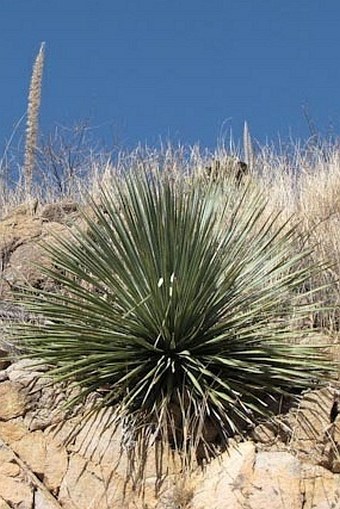
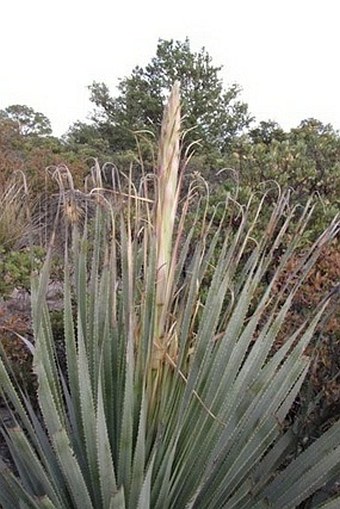
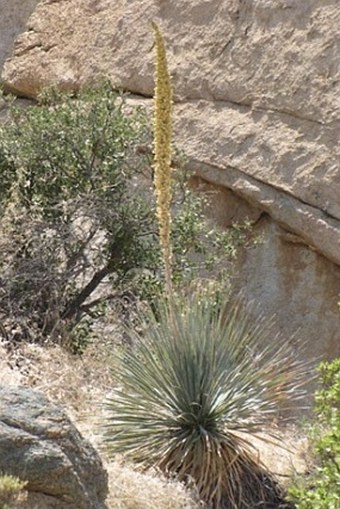
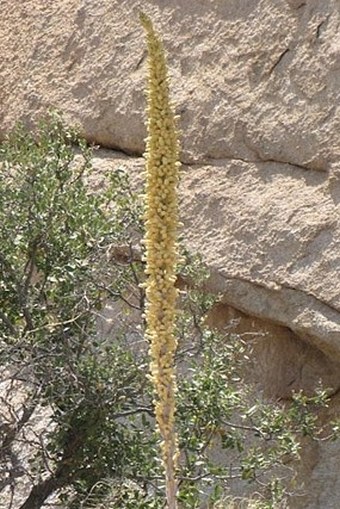
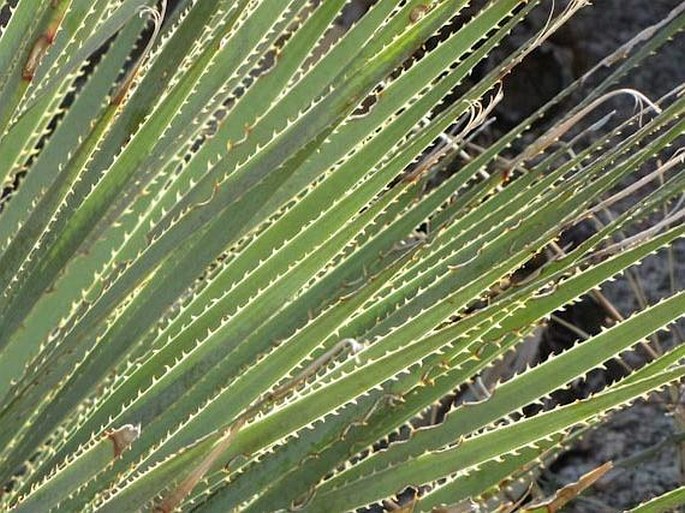
These images were taken in USA, Arizona, Kitt Peak and Indian Bread Rocks (May 2009).


